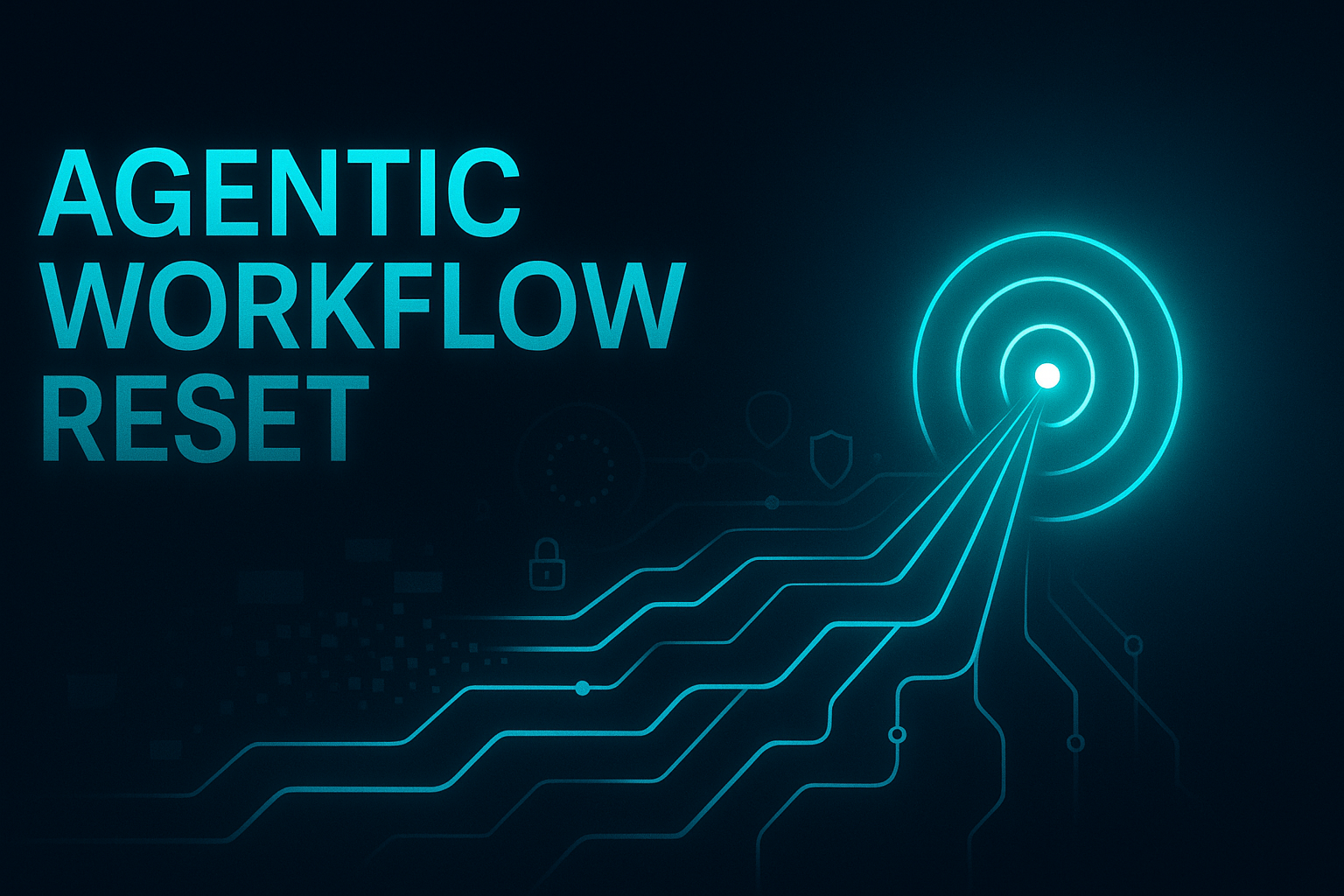Rethinking Processes for Autonomous Agents
Designing agentic AI workflows requires more than just retrofitting automation into existing human-led processes. Traditional workflows—especially those built and refined over time within IT systems—tend to reflect accumulated operational habits, organizational silos, and sometimes outdated constraints. While these systems may have served their purpose under human orchestration, they often become brittle or inefficient when directly ported to agentic architectures. The introduction of autonomous AI invites a fundamental rethinking: instead of asking how the legacy process functions, we should first ask what the desired outcome is—and then design backwards from that objective.
This outcome-first approach allows teams to abstract away from the mechanical steps embedded in legacy systems and focus instead on the intent behind the workflow. For example, if a procurement process exists to validate vendors, ensure budget alignment, and authorize purchasing, AI orchaestration should seek to fulfill those core outcomes directly—perhaps through intelligent policy enforcement, real-time data checks, and autonomous approvals—without necessarily replicating the exact multi-step chain that evolved to accommodate past systems or departmental reviews. In doing so, we liberate agentic systems to leverage their strengths: speed, adaptive decision-making, and dynamic orchestration.
However, this redesign shouldn’t ignore the secondary objectives that legacy processes often quietly satisfy. Many workflows are laden with implicit functions such as audit trails, compliance checkpoints, approval visibility, and exception handling. These needs may not be immediately obvious when focusing on primary outcomes, but they are critical for organizational trust and governance. When mapping to agentic equivalents, it is crucial to surface these secondary needs and ensure that the agentic system is instrumented with the right observability, override capabilities, and policy hooks to meet them.
Ultimately, designing agentic workflows is an exercise in intention and discipline. It calls for decomposing legacy logic into goals, constraints, and systemic affordances. This enables a clean-slate reconstruction of process logic that makes full use of AI agents' capabilities, while still embedding the guardrails and traceability required in real-world environments. Organizations that adopt this perspective will not only achieve better performance but also lay the foundation for more resilient, scalable, and auditable autonomous systems.
Augmenting with AI
A critical lens to apply when reimagining legacy workflows for agentic systems is the distinction between AI augmenting humans and humans augmenting AI. These two design paradigms have fundamentally different implications for workflow structure, oversight, and trust. In AI-human augmentation, the goal is to offload repetitive or rules-based tasks from humans to multi-agent systems, effectively replacing legacy human or IT-driven operations. This is ideal for processes such as invoice reconciliation, data enrichment, or scheduling logistics—tasks where agents can perform consistently, quickly, and with minimal need for human discretion.
On the other hand, human-AI augmentation places humans in a supervisory or decision-making loop, even though agents may do much of the heavy lifting. These workflows preserve critical human oversight in high-stakes, sensitive, or ambiguous domains. For example, an agentic system might draft complex legal documents, collate relevant case law, and flag potential risks—but a legal expert still conducts the final review. Similarly, in clinical settings, agents may analyze imaging data and highlight anomalies, but a trained medical professional renders the ultimate diagnosis. These workflows must be explicitly designed to create natural, timely, and traceable handoffs between agents and humans.
Identifying which of these paradigms applies to a given process is essential before porting it to an agentic equivalent. The difference dictates not just which tasks are automated, but also how interfaces are designed, how confidence thresholds are handled, and how escalation and override mechanisms are built. Agentic workflows designed without this distinction risk either eroding trust through over-automation or failing to deliver meaningful efficiency gains. By intentionally mapping each workflow along the AI-human/human-AI augmentation spectrum, organizations can ensure the resulting systems are both effective and aligned with real-world operational and ethical expectations.
Our Key Differentiators
At Aiceberg, we enable organizations to confidently transition from human- and IT-driven workflows to agentic AI systems by providing a robust platform for safety, security, compliance, and observability. We recognize that many legacy processes carry essential secondary objectives—such as auditability, regulatory alignment, and cross-functional oversight—that cannot be abandoned when shifting to autonomous execution. Our platform is designed to surface, preserve, and enforce these requirements within agentic workflows, ensuring that automation does not come at the expense of governance or trust.
What sets Aiceberg apart is our deep integration of observability and policy enforcement not only for agents, but also for humans-in-the-loop. In workflows where human-AI augmentation is necessary—such as legal review, medical diagnostics, or financial approvals—we don’t just monitor what the agents do. We provide AI governance and full lifecycle auditing of human decisions, capture rationales behind overrides or escalations, and ensure that human involvement is both transparent and aligned with organizational policies. This dual visibility closes the loop on hybrid workflows and positions Aiceberg as a critical layer of assurance across fully autonomous and partially supervised AI systems.
By embedding these capabilities, Aiceberg helps enterprises not just replicate legacy processes—but improve them. Our platform supports a shift from brittle chains of approvals and handoffs to dynamic, intelligent, and observable agentic systems that are aligned with both business intent and governance needs. We ensure that as organizations move forward with agentic AI, they do so with confidence, compliance, and control.
Conclusion
At Aiceberg, we believe that successful agentic workflows require more than intelligent automation—they demand governance, transparency, and control at every stage. Our platform is purpose-built to surface hidden requirements, enforce policy, and deliver full lifecycle visibility across autonomous and hybrid systems. By enabling enterprises to preserve essential safeguards while embracing next-generation capabilities, we help them move beyond simply automating the past and toward building agentic systems that are secure, compliant, and future-ready.



See Aiceberg In Action
Book My Demo







